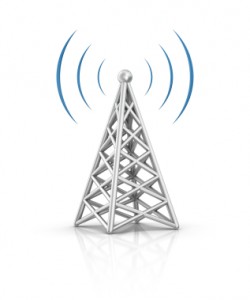Dictionary Series – Wireless Clock Lingo: A Reference Guide
Trying to decide on a wireless clock system? If you are new to the world of synchronized timekeeping, this may not be the easiest task. Perhaps the first thing you should do is learn how to talk the talk. Learning how wireless clocks work and making necessary decisions when picking them out, however, can be daunting. Sapling hopes that knowing the lingo before choosing components for your system will make life a little simpler. Below is a list of important words and phrases you should familiarize yourself with when choosing a wireless clock system.
Repeater: a repeater takes a wireless signal and redistributes the signal to wireless clocks in a broader signal range to ensure that they are able to synchronize regardless of their distance
Transmitter: a device that broadcasts a wireless data signal out to other devices within range in order to synchronize those devices.
Transceiver: a device that both receives transmitted data and sends it back out for further transmission, hence extending the range of the signal to
what could ultimately be an infinite distance
Frequency-Hopping: when a wireless device broadcasts its signal on a range of frequencies randomly and frequently to prevent signal interference when other wireless devices are present in the area
FCC License: a license a user must purchase and renew periodically for wireless devices that do not run on the designated, free frequency range specified by the FCC (Federal Communications Commission)
Retrofitting: when a wireless clock system is installed so that it uses or works around pre-existing infrastructure to function properly and without disruption to other installed systems
Correction Time: this refers to how quickly a clock begins to correct itself after a system power outage or time change
Normal Mode: this typically refers to an energy standard in which a wireless clock synchronizes more often but in return drains more energy from installed batteries
Economy Mode: this energy standard is designed to prevent a wireless clock from synchronizing as often as it would in normal mode, thus draining less energy and extending battery life
Diagnostics: refers to specific statuses of a wireless device such as battery life, signal strength, mechanical error, display error, etc.

